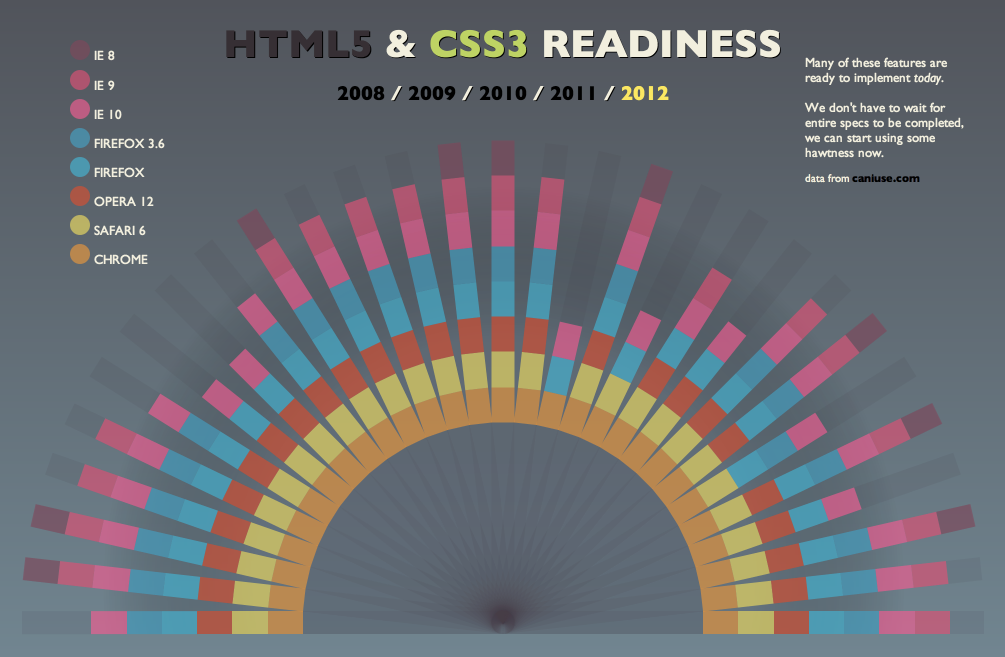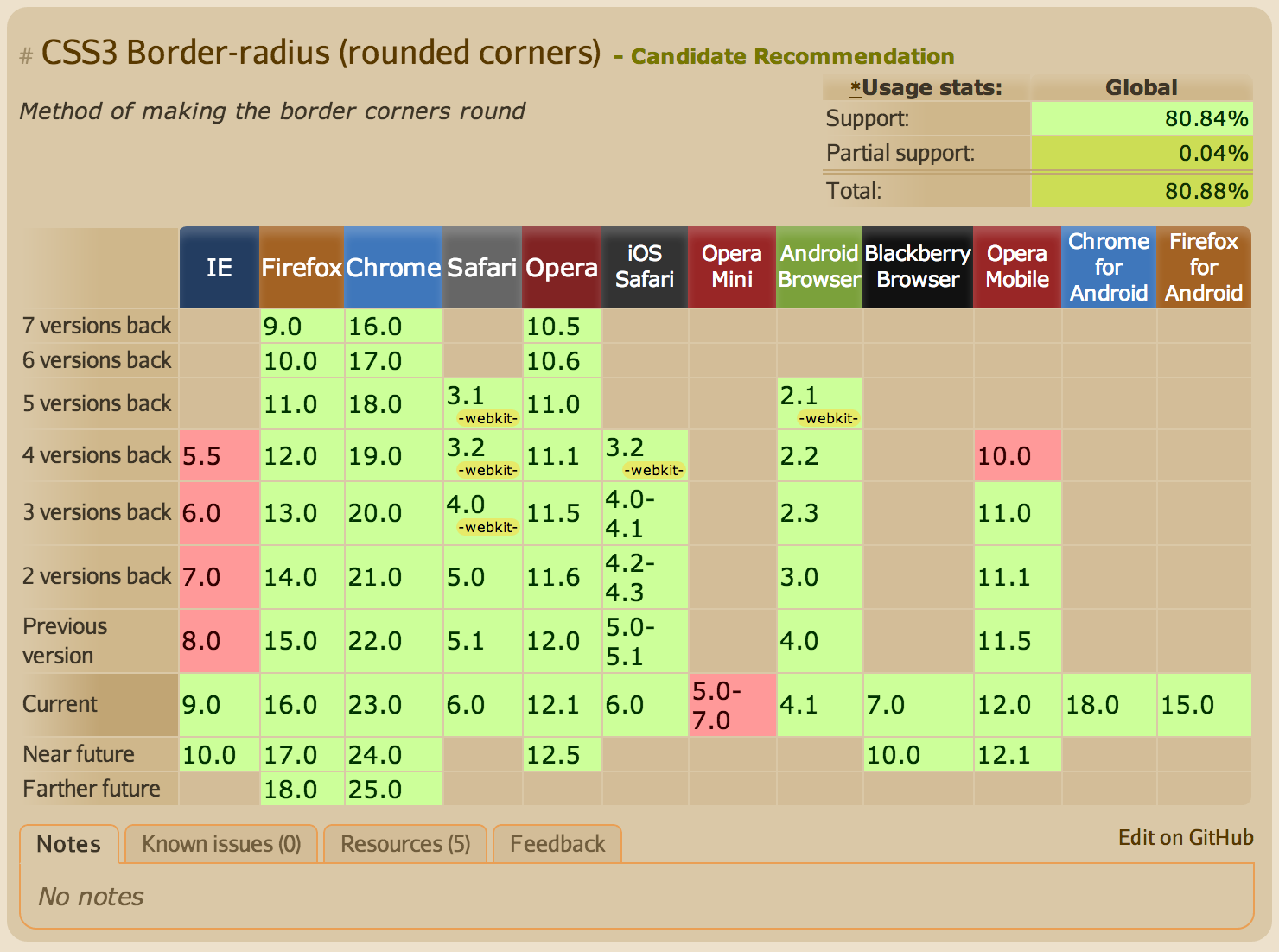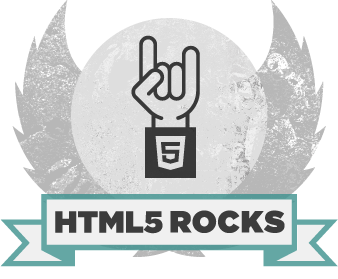
Intermediate HTML and CSS
Class 1
Welcome!
Girl Develop It is here to provide affordable and accessible programs to learn software through mentorship and hands-on instruction.
Welcome to the first Intermediate Class @ Girl Develop it Fargo!
Some "rules"
- We are here for you!
- Every question is important
- Help each other
- Have fun
About Me!
My name is Blaine Booher
- I'm a software developer
- I've been working on the web for 15 years!
- I've traditionally been a backend/server developer, but over the past few years have focused more on frontend (HTML/CSS)
- I am excited to get you learn'n HTML5 and CSS3!
Welcome!
Tell us about yourself.
- Who are you?
- What do you hope to get out of the class?
- What is your experience level?
- Where do you think is the coolest place on earth?
Review: Terms
-
Web designThe process of planning, structuring and creating a website
-
Web developmentThe process of programming dynamic web applications
-
Front endThe outwardly visible elements of a website or application
-
Back endThe inner workings and functionality of a website or application.
Review: Tools
-
BrowserChromeFirefox
-
Development ToolkitChrome - InspectorFirefox - Firebug
-
Text EditorTextWrangler - MacNotepad ++ - WindowsSublime Text - Mac or Windows
Review: Anatomy of a website
A website is a way to present your content to the world, using HTML and CSS to present that content & make it look good.
Review: Anatomy of a website
A paragraph is your content
-
Putting your content into an HTML tag to make it look like a paragraph is Structure
<p>A paragraph is your content</p> -
Make the font of your paragraph blue and 18px is presentation
A paragraph is your content
Review: Anatomy of an HTML element
-
Element
- An individual component of HTML
- Paragraph, Table, List
-
Tag
- Markers that signal the beginning and end of an element
- Opening tag and Closing Tag
<tagname>Stuff in the middle</tagname> -
<p>This is a sample paragraph.</p>
Review: Anatomy of an HTML element
-
Container Element
- An element that can contain other elements or content
- A paragraph (<p>) contains text
-
Stand Alone Element
- An element that cannot contain anything else
-
<br/> <img/>
Review: Anatomy of an HTML element
-
Attribute
- Each element can have a variety of attributes
- Language, style, identity, source
-
Value
- Value is the value assigned to a given attribute.
-
<p lang="fr">C'est la vie</p> <img src="my.picture.jpg"/>
CSS: Review
CSS = Cascading Style Sheets
CSS is a "style sheet language" that lets you style the elements on your page.
CSS works in conjunction with HTML, but is not HTML itself.
Review: The CSS Rule
selector {
property: value;
}A block of CSS is a rule block.
The rule starts with a selector.
It has sets of properties and values.
A property-value pair is a declaration.
Review: CSS Syntax
Declarations: Property and value of style you plan use on HTML element.
Declarations end with a semicolon
Declarations can be grouped and are surrounded by curly brackets.
selector {
property: value;
property: value;
property: value;
}Review: Selector: Element
p {
property: value;
}Selects all paragraph elements.
img {
property: value;
}Selects all image elements.
Review: Selector: ID
#footer {
property: value;
}Selects all elements with an id of "footer".
<p id="footer">Copyright 2011</p>The associated HTML.
Selector: Class
.warning {
color: red;
}Selects all elements with a class of "warning".
<p class="warning">Run away!</p>The associated HTML.
Review: Selector: Position
p em {
color: yellow;
}
Selects all em elements that are within a paragraph
<p>This is <em>important.</em></p>
The associated HTML.
Standard Practices
Awesome, right?
But how do people use this REALLY?
- Reset CSS files
- Standard widths and sizes
- Wrappers
Reset CSS
Even though HTML is the structure and CSS is the design, some HTML elements have default styles
Examples include:
- Bulleted lists like this one have standard bullets
- Paragraphs have default padding
- Links are blue and underlined
Reset CSS
margin: 0;
padding: 0;
border: 0;
font-size: 100%;
font: inherit;
vertical-align: baseline;
list-style: none;
Standard widths and sizes
Some sizes that are good to know about
- A standard font size is usually 12px
-
Screens vary greatly in width!
Standardize your design a couple ways
- Set the body width to a specific width
- Set the content area width to 100%, with max-width of around 1200px/1400px and a min-width of around 960px.
Wrappers
Wrappers are a good way to center content if the screen width is wider than your content.
.wrapper{
width: 100%;
max-width:1400px;
margin: 0 auto;
}
Let's Develop It
Getting our feet wet
- Download practice files
- Look through the page
- Add a link to the reset.css file in the head of the document
- Notice the changes to the layout
Linking on pages
<a href = "#section">Go to Section!</a>
<a name= "section"></a>
Pseudo Selectors
In addition to applying css to elements, classes and ids, you can apply css on certain events. Most notably, hover
.turn-blue:hover{
background-color: lightblue;
color: grey
}
<div class = "turn-blue">I will only turn blue on hover</div>
@font-face
The world of HTML has progressed beyond Times New Roman and Arial
Yay!
How do we use new and cool fonts?
@font-face
Use font from outside sources (like Google Web Fonts)
http://www.google.com/webfonts
In our example, we use Audiowide, Quicksand and Lato
<link href="http://fonts.googleapis.com/css?family=Audiowide|Quicksand:300,400,700|Lato:100,300,400,700,900,100italic,300italic,400italic,700italic,900italic" rel="stylesheet" type="text/css">
@font-face
Download fonts locally
In our example, we downloaded 'Entypo'
To use it, add the following to css:
@font-face {
font-family: 'EntypoRegular';
src: url('font/Entypo-webfont.eot');
src: url('font/Entypo-webfont.eot?#iefix') format('embedded-opentype'),
url('font/Entypo-webfont.woff') format('woff'),
url('font/Entypo-webfont.ttf') format('truetype'),
url('font/Entypo-webfont.svg#EntypoRegular') format('svg');
font-weight: normal;
font-style: normal;
}
@font-face
Using the fonts
body{
font-family: 'Lato', Arial, sans-serif;
}
Let's Develop It
Use your new-found knowledge!
- Update the links in the header and footer to jump to the corresponding section
- Update the links in the site to change color on hover. Try to update the background color too!
-
Update the font of the site. The completed example uses:
- Lato for the body
- Audiowide for h1
- Quicksand for h2
- EntypoRegular for the bullets and jump up/down links
HTML 5: What is it?
Formally, HTML5 is the W3C’s specification for the next version of HTML.
Informally, people use "HTML5" to refer to a whole set of new web standards and abilities:
- HTML5
- CSS3
- JavaScript
HTML5 Specifications
- 2004 - started work
- 2008 - first public working draft
- 2011 - last call
- 2012 - working draft
- 2014 - planned for stable recommendation
What about the browsers?
- Chrome
- Firefox
- Internet Explorer
- Safari
- Opera
HTML5 & CSS3 Readiness
HTML5 & CSS3 Readiness
Can I Use?
Can I Use?
HTML5 Please
HTML5 Please
Helpful Resources



So what's so cool about it?
Too much to cover in our time together
But here are some highlights:
Marks some old things obsolete
Examples
- Deprecated items (e.g. frame, frameset, noframes)
- Presentational elements and attributes replaced by CSS (e.g. font, big, center)
Redefines a few things
Gives some old elements semantic meaning and separates them from presentation (e.g. b, i, strong, em)
Adds a bunch of new features
-
semantics
-
offline & storage
-
device access
-
connectivity
-
multimedia
-
3D & graphics
-
performance
-
presentation
HTML5 Doctype
<!DOCTYPE html>
Minimum information required to ensure that a browser renders using standards mode
Old Doctypes
<!DOCTYPE HTML PUBLIC "-//W3C//DTD HTML 4.01//EN"
"http://www.w3.org/TR/html4/strict.dtd">
<!DOCTYPE html PUBLIC "-//W3C//DTD XHTML 1.0 Strict//EN"
"http://www.w3.org/TR/xhtml1/DTD/xhtml1-strict.dtd">
 Semantic HTML
Semantic HTML
The use of HTML markup to reinforce the semantics, or meaning, of the information in webpages rather than merely to define its presentation (look).-Wikipedia
 Semantics
Semantics
Give meaning to structure
Not Semantic
<div id="header"></div><div class="nav"></div><div id="footer"></div>Semantic
<header></header><nav></nav><footer></footer>New Structural Elements
<section>
- Group together thematically related content
- Similar to prior use of the div, but div has no semantic meaning
<header>
- Container for a group of introductory or navigational aids
- Document can have multiple header elements
- E.g. One for the page, one for each section
<footer>
- Contains information about its containing element
- E.g. who wrote it, copyright, links to related content, etc.
- Document can have multiple footer elements
- E.g. One for the page, one for each section
<aside>
- Tangentially related content
- E.g. sidebar, pull quotes
<nav>
- Contains major navigational information
- Usually a list of links
- Often lives in the header
- E.g. site navigation
<article>
- Self-contained related content
- E.g. blog posts, news stories, comments, reviews, forum posts
Not Semantic
<body>
<div id="header">
<h1>Hi, I'm a header!</h1>
<div id="nav">
<ul>
<li><a href="foo">foo</a></li>
<li><a href="bar">bar</a></li>
</ul>
</div>
</div>
<div id="main">
<div class="article">foo</div>
<div class="article">bar</div>
</div>
<div id="footer">Hi, I'm a footer!</div>
</body>
A lot of Divs
<body>
<div id="header">
<h1>Hi, I'm a header!</h1>
<div id="nav">
<ul>
<li><a href="foo">foo</a></li>
<li><a href="bar">bar</a></li>
</ul>
</div>
</div>
<div id="main">
<div class="article">foo</div>
<div class="article">bar</div>
</div>
<div id="footer">Hi, I'm a footer!</div>
</body>also known as div-itis
Semantic
<body>
<header>
<h1>Hi, I'm a header!</h1>
<nav>
<ul>
<li><a href="http://www.foo.com">foo</a></li>
<li><a href="http://www.bar.com">bar</a></li>
</ul>
</nav>
</header>
<section>
<article>foo</article>
<article>bar</article>
</section>
<footer>Hi, I'm a footer!</footer>
</body>Semantic Markup Enhances
- Accessibility
- Searchability
- Internationalization
- Interoperability
It also helps treat the plague of div-itis!
What about old browsers?

HTML5Shiv
HTML5ShivHTML5 IE enabling script
<!--[if lt IE 9]>
<script src="html5shiv.js"></script>
<![endif]-->polyfill (n): a JavaScript shim that replicates the standard API for older browsers
Let's Develop It
Modify the site to use semantic HTML
- Change one small thing at a time
- Remember to modify the CSS to match the HTML
- You have 10-15 minutes to get started
- You won't be able to change everything - if we have time, you can continue at the end of the workshop